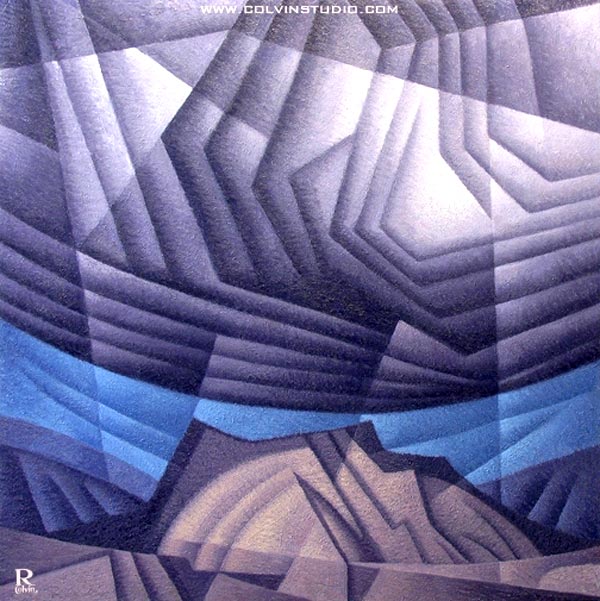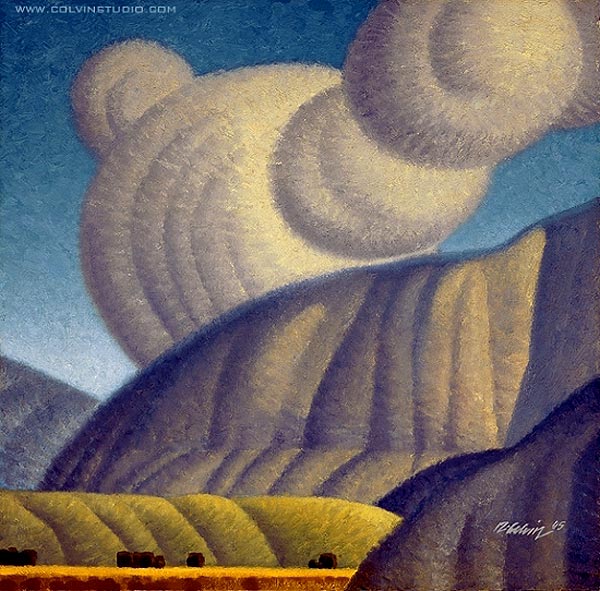Another fascinating painting from Carel Pieter Brest van Kempen-- not only does he offer this detailed work, but also lists the species of every image in the painting!
 Discipline—Ferruginous Hawk, 1995, acrylic on illustration board 40 x 30 in. Credit: Carel Pieter Brest van Kempen"Traditionally lumped in the buzzard genus, alongside the Red-tailed Hawk and her kin, the Ferruginous Hawk (Buteo regalis) of arid western North America is unusual within that group. Larger and more powerful than the other buteos, it shares many features with the hawk eagles of the genera Spizaetus and Hieraetus. Incidental species in this painting include Field Mushrooms (Agaricus sp.), Milfoil Yarrow (Achilles millifolium), Northern Sweetvetch (Hedysarum boreale), Tapertip Onions (Allium acuminatum), Big Sagebrush (Artemisia tridentata), Curlycup Gumweed (Grindelia squarrosa) Common Dandelion (Taraxacum officianale), Early Paintbrush (Castilleja chromosa), Oregon Grape (Berberis repens), cinquefoil (Potentilla sp.), Utah Serviceberry (Amelanchier utahensis), Plains Prickly-pear (Opuntia polyacantha), daddy-long-legs (family Phlangiidae), spittlebug (Philaemus sp.), Banana Assassin Bug (Fitchia aptera), velvet ant (Dasymutilla sp.), Nuttall's Sheep Moth (Hemileuca nuttalli), tent worm (Malacosoma sp.) and Sagebrush Lizard (Sceloporus graciosus)." - Carel Pieter Brest van Kempen
Discipline—Ferruginous Hawk, 1995, acrylic on illustration board 40 x 30 in. Credit: Carel Pieter Brest van Kempen"Traditionally lumped in the buzzard genus, alongside the Red-tailed Hawk and her kin, the Ferruginous Hawk (Buteo regalis) of arid western North America is unusual within that group. Larger and more powerful than the other buteos, it shares many features with the hawk eagles of the genera Spizaetus and Hieraetus. Incidental species in this painting include Field Mushrooms (Agaricus sp.), Milfoil Yarrow (Achilles millifolium), Northern Sweetvetch (Hedysarum boreale), Tapertip Onions (Allium acuminatum), Big Sagebrush (Artemisia tridentata), Curlycup Gumweed (Grindelia squarrosa) Common Dandelion (Taraxacum officianale), Early Paintbrush (Castilleja chromosa), Oregon Grape (Berberis repens), cinquefoil (Potentilla sp.), Utah Serviceberry (Amelanchier utahensis), Plains Prickly-pear (Opuntia polyacantha), daddy-long-legs (family Phlangiidae), spittlebug (Philaemus sp.), Banana Assassin Bug (Fitchia aptera), velvet ant (Dasymutilla sp.), Nuttall's Sheep Moth (Hemileuca nuttalli), tent worm (Malacosoma sp.) and Sagebrush Lizard (Sceloporus graciosus)." - Carel Pieter Brest van Kempen
 Tuesday, April 17, 2012 at 9:48PM Tweet
Tuesday, April 17, 2012 at 9:48PM Tweet  © My-West.com Photography Collection. All rights reserved.
© My-West.com Photography Collection. All rights reserved.






